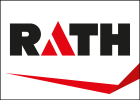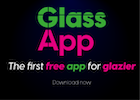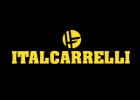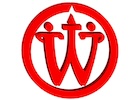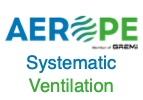On June 26, in conjunction with Glass Performance Days 2019, Glaston hosted its first-ever Management Forum in Tampere, Finland. A panel of seven outstanding speakers presented their perspectives on mind-blowing megatrends and described how these trends can create opportunities for smarter buildings and smarter business.
“It’s the first time CEOs, architects and other opinion leaders have come together to openly discuss multiple hot topics to help the glass industry take the lead in defining the future: digitalization, smart glass, smart buildings and smart cities. All are interconnected,” said Sasu Koivumäki, COO and Deputy CEO of Glaston.
The megatrends are urbanization, technological breakthroughs and climate change, which are reshaping our environment. Never before has it been so urgent to discuss these topics and help the glass industry find new ways to embrace these megatrends.
Pekka Sivonen of Business Finland stressed the importance of the digital transformation in the glass industry. With digital transformation, things become enhanced to give a better interactive experience – the same applies to glass.
“Digital transformation is based on data, and data is the new currency. Algorithms are the new decision-makers. By 2030, we will have 100 times more data than we have today,” he says.
“First we had products. Then, we had smart products, and now we have smart connected products. Since everything will be connected, we’ll need a new digital mindset to rethink how money can be made. There will be an explosion of new business opportunities out there. But first, artificial intelligence, cybersecurity and sustainability need to be built in,” he continues. In his opinion, we need to speed up our capability to share information with each other. That’s the only thing that separates us from apes.
Jyri Putkonen from Nokia Bell Labs continued on the topic of the connected future, especially the future of 5G. “This year of 2019 is year 15 of 5G research and year 1 of its deployment. 3G and 4G are no longer sufficient – we need to shift from a mobile-digital era to an everything-digital era. 5G offers the advantages of remote operation and high accuracy, data rates and latency, enabling new diverse services and supporting vertical value chains.”
“End-to-end 5G will redefine human existence and industrial productivity, which directly relates to glass processing as well,” he stated. People no longer need to be in one physical location anymore. The best brains are able to work together remotely.
In his opinion, a window is no longer a building component for shutting an opening in a wall. Instead a window can be a passage for electromagnetic waves, meaning information, from one space to another. A window can be a large HD display, a 5G antenna, a source of environmental data, a sensor, or a provider of data security and privacy. It can take on a completely new role as an opportunity window to transfer data.
From the City of Tampere, Teppo Rantanen explained the concept of a smart city for sustainable living. He believes a smart city is one in which digital services make life easier and increase a citizen’s well-being and safety. He discussed how glass can help transform any city into a smart city. Buildings are key elements in creating smart cities – and what makes them smart is intelligent glass.
Finland ranks #1 when it comes to transforming buildings with digitalization, according to Ville Stenius from Siemens Oy. He gave the example of Sello Shopping Center Finland as an active player in the total energy system. With 1,500+ data points, it’s one of the smartest buildings in Europe.
“Smart buildings are part of a smart society, enabling easy and healthy living, as we spend 90% of our time inside,” he said. “Today, buildings are talking – they are generating data. We just need to find ways to use it to create perfect infrastructures.”
Sing Koo, from NSG Group, described the path toward zero-energy buildings (ZEB). “The primary target is to reduce energy consumption. Still, we need to go further – aiming at a building with a net savings of 100% or more. For this, we need smarter integrated glazing solutions. Building-integrated photovoltaic (BIPV)/switchable glazing is the next step for smart buildings – and the health and well-being of people.”
He goes on to say that collaborative development is critical to meet future challenges. “To scale up our efforts, we need to scale up our collaboration – both in glass production and R&D. Small, agile startups creating innovations need to collaborate with large multinationals with the muscle to drive the ideas through to commercialization.”
From Lawrence Berkley National Laboratories, Stephan Selkowitz, a legend in our industry, gave an overview of dynamic façade solutions. Glass façades are still considered energy losers. We are moving closer to energy-neutral façades, but we should move to energy-producing facades instead.
“We already moved once from double glazing to Low-E glazing, saving USD 150 billion. So what stops us from making this move now to smart glazing? What’s missing is the collaboration among the industries, as all the technologies already exist,” he challenged.
Mika Sulin wrapped up the discussion with his vision for the Tampere Deck and Arena, a new city district and a good example of ecosystem partners working together to create an event mega hub in the center of Tampere over the national railway. The list of firsts is impressive, especially using big data to lower the carbon footprint and increase sustainability. A huge amount of glass will create a totally new user experience to showcase what smarter buildings and smarter business look like for real.
As Sasu Koivumäki concluded, “The glass industry already knows how to generate power and save energy. Now it’s time for us as an industry to take our share of the business and improve our users’ experience using glass as one means to do so. By collaborating on all levels, we can make this change happen even faster.”



